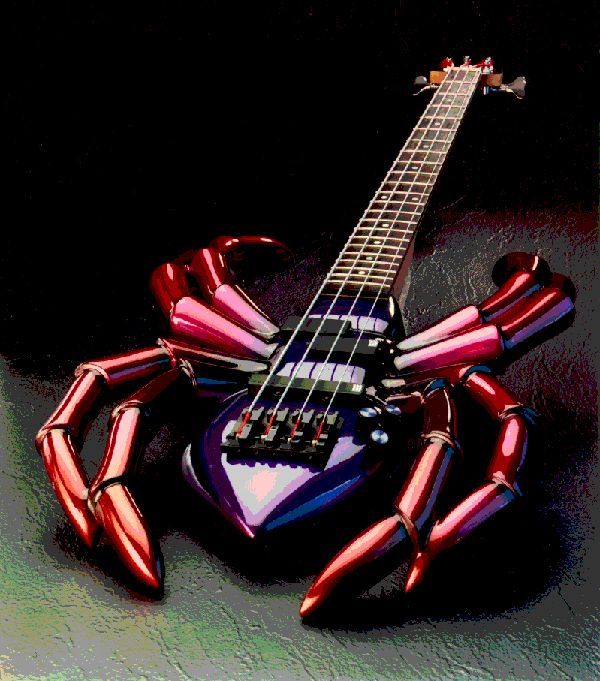|
|
Unusual Guitar
|
• Headstock
The headstock is located at the end of the guitar neck furthest from the body. It is fitted with machine heads that adjust the tension of the strings, which in turn affects the pitch. Traditional tuner layout is "3+3" in which each side of the headstock has three tuners (such as on Gibson Les Pauls). In this layout, the headstocks are commonly symmetrical. Many guitars feature other layouts as well, including six-in-line (featured on Fender Stratocasters) tuners or even "4+2" (Ernie Ball Music Man). However, some guitars (such as Steinbergers) do not have headstocks at all, in which case the tuning machines are located elsewhere, either on the body or the bridge.
• Nut
The nut is a small strip of bone, plastic, brass, corian, graphite, stainless steel, or other medium-hard material, at the joint where the headstock meets the fretboard. Its grooves guide the strings onto the fretboard, giving consistent lateral string placement. It is one of the endpoints of the strings' vibrating length. It must be accurately cut, or it can contribute to tuning problems due to string slippage, and/or string buzz. To reduce string friction in the nut, which can adversely affect tuning stability, some guitarists fit a roller nut. Some instruments use a zero fret just in front of the nut. In this case the nut is used only for lateral alignment of the strings, the string height and length being dictated by the zero fret.
|
|









